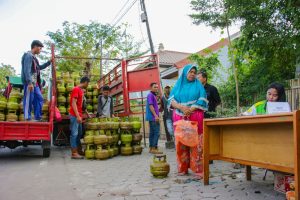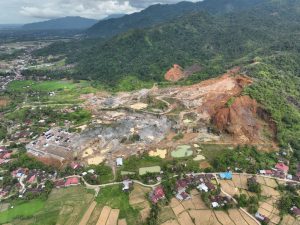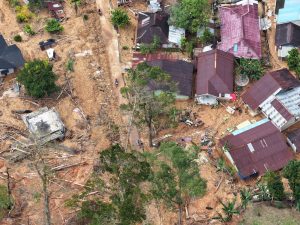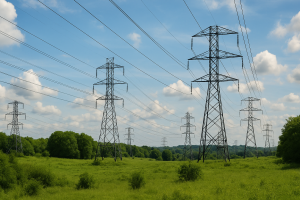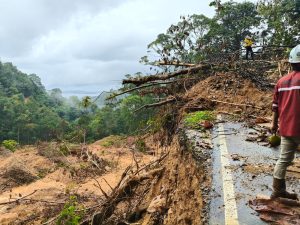Jakarta – PT PLN (Persero)’s commitment to strengthening national energy security is becoming increasingly concrete with the commencement of gasification infrastructure development for Gas Engine Power Plants (PLTMG) in Nias. The project is led by PT PLN Energi Primer Indonesia (PLN EPI) subholding and was officially started through a groundbreaking ceremony on Thursday, 3 July.
“This initiative is PLN’s real step in supporting President Prabowo Subianto’s vision of energy self-sufficiency through more efficient and environmentally friendly utilisation of natural gas,” said PLN EPI President Director Rakhmad Dewanto in his speech.
The gasification project will be equipped with a 3,000m³ LNG storage tank and a regasification system with a capacity of 13 million standard cubic feet per day (MMSCFD). This infrastructure supports the power plant, which currently operates at a capacity of 35 megawatts (MW), and will be increased to 59 MW in the future.
According to Rakhmad, the use of gas as an energy source at the MHP has excellent potential to reduce the carbon footprint.
“This project has the potential to reduce carbon emissions by 30 per cent, equivalent to 29 thousand tonnes of CO₂ per year in the initial stage, and 47 thousand tonnes of CO₂ when full capacity is reached,” he said.
Reduce fuel imports, strengthen energy security
Jisman P. Hutajulu, Director General of Electricity at the Ministry of Energy and Mineral Resources, stated that the development aligns with the government’s policy direction of reducing dependence on fuel oil imports and strengthening the national energy transition roadmap.
“The gasification groundbreaking at the Nias MHP is not only to provide reliable and affordable electricity, but also to strengthen the local economy and national energy security,” said Jisman.
He also mentioned that this project is part of a plan to develop six gasification clusters in Indonesia, namely: Nias, Sulawesi-Maluku, Nusa Tenggara, North Papua, South Papua, and Kalimantan.
Meanwhile, PLN President Director Darmawan Prasodjo emphasised that the project not only brings technical benefits, but also drives the local economy. “Through the cooperation of various parties, we are not only building gasification infrastructure, but also building a resilient and sustainable energy future and providing a multiplier effect for the community,” Darmawan said.
With a power reserve of 20 MW, equivalent to around 43 per cent of the peak load, the Nias electricity system is considered robust enough to support growth in strategic sectors, including fisheries, tourism, and MSMEs.
He also revealed that the efficiency of this fuel transition is very significant. “Gasification is estimated to save around Rp72.4 billion per year, and could reach Rp153 billion per year when fully operational. This efficiency opens up space for new investment and supports Nias’s electricity consumption, which rose 11 per cent, the highest in Sumatra,” he concluded. (Hartatik)
Banner photo: Image generated by OpenAI’s DALL·E via ChatGPT (2024)




